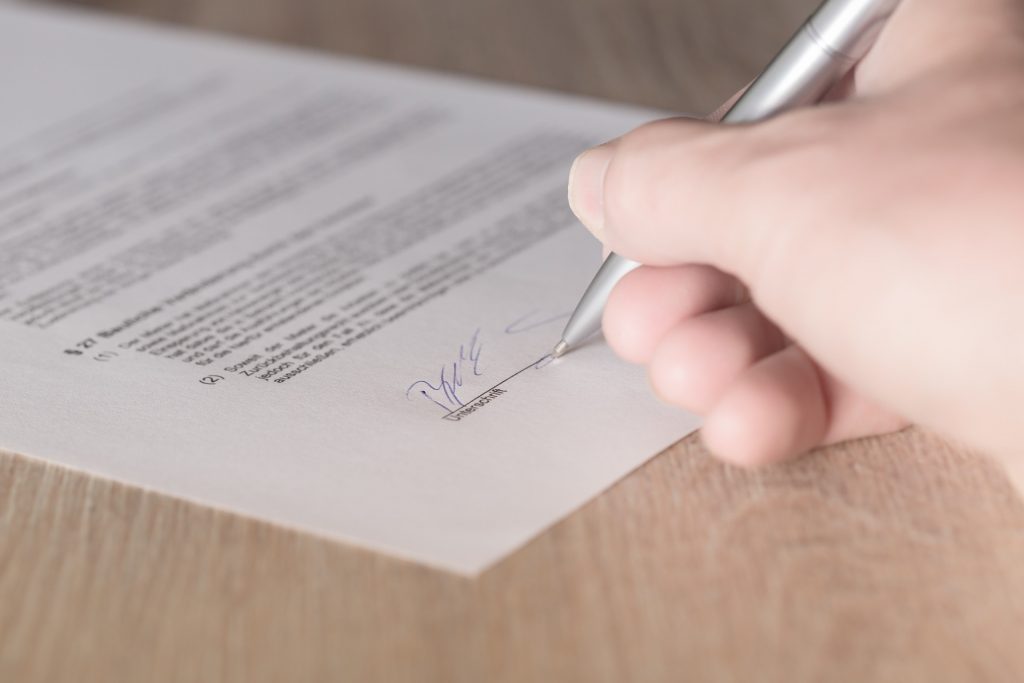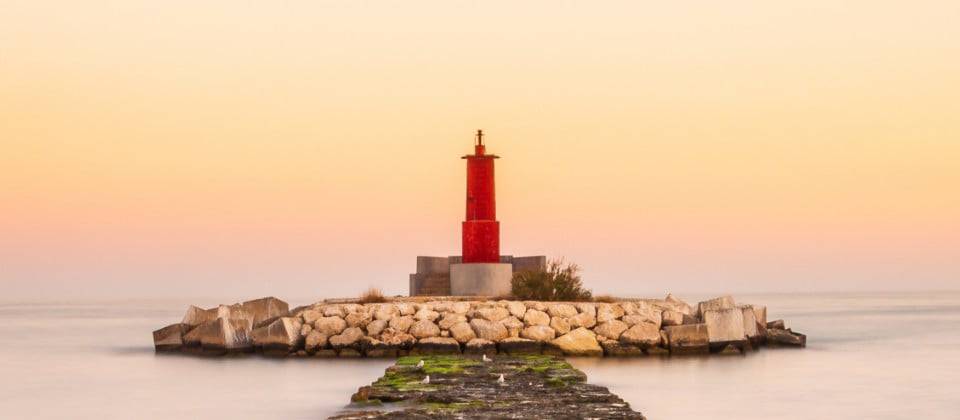The NIE number: what is it, why do you need it and how should you apply for it?
As a tourist, sitting on your lazy butt on a beach in Spain, you can thankfully do so without papers, stamps or visas, thanks to the European Union. But as soon as you want to get something official done there, like buying a home under the Mediterranean sun, you will need an NIE number.

For most Flemings with Spanish dreams, the NIE number means the first encounter with local bureaucracy. But don't panic, with this guide we'll guide you past that first hurdle without any problems.
What is an NIE number?
NIE is the abbreviation for Número de Identidad de Extranjero. In Flemish: an identification number for foreigners in Spain. You need this unique combination of numbers and letters for... well, just about anything, really. It proves that you are officially residing in the country according to the books, although it does not replace your Belgian identity card. You will continue to need those.
Why do I need an NIE number?
As a foreigner, you need a NIE number in Spain for any official procedure - what the Spanish call trámite - where you must be able to prove your identity. If you want to buy a car, get your gas connected or work in Spain, you will need to provide your NIE number. Even a cell phone subscription or an Internet connection you can't close without.
Some more cases for which you need the number:
- Buy, sell or insure a home
- Make any purchase above 3000 euros
- Opening a bank account
- Apply for a mortgage loan
- Connecting utilities
- Studying at the university
- Setting up a business
- Enroll in the population register of the local municipality
- Paying taxes
- Registering for social security
- Renewing a driver's license
- Internship
- Breathing in and out
We are not entirely sure about the latter, but it is clear that a NIE number is indispensable for anyone who has serious plans in Spain.
Certainly anyone who wants to buy a second home in Spain can't get around this. More than that: you must already be in possession of an NIE number at the time you sign the purchase deed at the notary. So it is best to make sure that you initiate your application on time.
Which brings us to the next point:
How should I apply for an NIE number?

First of all, don't be put off by the procedures you have to go through to obtain a NIE number. Yes, Spanish bureaucracy is sometimes to cry an eyeball out from. Otherwise, we wouldn't have written a blog post with tips on how to overcome that grind. But if you follow the following instructions carefully, you will soon have the redeeming piece of paper in your hands. There are four ways to apply for an NIE number. In practice, the first two are the most common.
Option 1: with the police in Spain
We speak in two words, but an appointment at the local police station is probably the easiest and most appropriate way to get your NIE number. Often also the fastest, especially for Flemish people who buy a house and are going to spend time in Spain anyway. They often complete the procedure between the signing of the reservation contract and the compromise, during the period when a lawyer is performing legal checks on the property.
How does it work?
1/ Make an appointment at the local police station
You can do so through this website, which unfortunately exists only in Spanish. In case you don't master that language (yet), we will guide you through it.
- Under provincias disponibles, select your province. Click on aceptar.
- Under trámites disponibles para la provincia seleccionada choose policia - asignacion de NIE. Again, choose aceptar.
- The following page lists the documents you need to bring to the office. About which more in a moment. Click entrar.
- Check pasaporte and enter your passport number. Attention: without dashes and spaces, or your appointment may be cancelled. At nombre y apellidos, note your first and last name as listed on your passport. Do this carefully. It doesn't matter that everyone calls you Erik, you fill in Joseph if that name is on your passport. By año de nacimiento and pais de nacionalidad come your year of birth and your nationality respectively. Check that you are not a robot and click aceptar.
- To make an appointment, click on solicitar cita on the next page. Then you can select the nearest office. Click on siguiente.
- Then fill in phone number and email address. Under reason for appointment, select solicitud NIE. Click on siguiente.
- With any luck, you will now get a list of possible dates. Choose the one that suits you and click siguiente. If no appointments are available(no hay suficientes citas disponibles), best try again later.
- Confirm the information by checking estoy conforme con la información mostrada en pantalla and also check the box next to the request for an email confirmation of your appointment(deseo recibir un correo electrónico con los datos de mi cita). Click confirmar.
- The last page confirms your appointment. For safety, it is best to print that page. In fact, sometimes the confirmation email does not come through.
Frequently asked question: why can't I get an appointment?
It depends a bit on the region, but sometimes it seems harder to get an appointment at a Spanish police station than to score an audience with the pope. Sometimes it even takes a month or two, although it usually succeeds sooner. Keep trying is the message.
Pro-tip: try to log on to the website at eight a.m. on Monday. At that time, the new appointments are scheduled. Another option is to choose a police station that is a little further away from the tourist centers.
2/ Go to the bank
First you need to fill out form modelo 790 código 12. Write down your personal information and check asignación de número de identidad de extranjero (NIE) a instancia del interesado. At the bottom, indicate that you want to pay cash(en efectivo) . Print the form in A4. The latter is more important than it seems. Sign and go with it to any bank. There you will pay 9.64 euros and receive a receipt in return. Keep a good record of that, as you will need it during the next step.
3/ Go to your appointment at the police station
Before you leave, make sure you have all the necessary documents:
- Document EX-15 (Solicitud de NIE y Extranjeros). Printed and completed in duplicate. Here is a completed example.
- The proof of payment from step 2.
- An original valid ID and a copy thereof (recto/verso).
- Passport photos in color.
- Reason for application. In your case, perhaps a preliminary purchase agreement.
- Printed confirmation of appointment. Matter of not giving the officials a reason to send you back home without notice.
To be on the safe side, register well in advance at the immigration office of the police station. It is more likely that you will have to wait, but it is best to minimize the risk of missing your appointment.
The appointment usually doesn't take long. Sometimes you will be outside with your NIE number after only a few minutes. Although that does depend from office to office. Some agencies collect applications in the morning, only to process them later. In this case, you will be given a receipt(resguerdo) and must return at another time.

Option 2: at the Spanish Consulate in Brussels
If you buy a second home in Spain, you can also obtain a NIE number in Belgium. This option does not apply if you plan to move, or if you will be working in Spain, for example. In those cases you have to go to a police station over there anyway. But those who want to use their Spanish acquisition only to go on vacation can be helped in Belgium.
Make an appointment by phone at the Spanish Consulate in Brussels in good time. Beware: this is notoriously difficult and the waiting times are long, up to two to three months.
Data it from the Spanish Consulate General in Brussels:
- address: Rue Ducale 85-87, 1000 Brussels (near the Park of Warande)
- phone number: 02 509 87 70
- office hours: Monday to Thursday, 9 a.m. to 5 p.m., Friday 9 a.m. to 2:30 p.m.
You will need these documents:
- Document EX-15 (in triplicate). Enter your home address in Belgium in steps 1 and 3.
- Form modelo 790 código 12. Again with address in Belgium.
- An original valid ID and a copy thereof (recto/verso).
- Passport photos in color.
On the spot, you must pay 9.64 euros for your NIE number and 7.17 euros for a certificate of non-residency. This can only be done in cash. After your appointment, the consulate will send the application to the Commissariat General of the Aliens Police in Madrid. Normally, you will then receive your NIE number via email within two weeks.
Option 3: through a power of attorney in Spain
After signing the reservation contract, you can ask the Spanish notary to give a power of attorney (poder) to a lawyer on the spot. In addition to the power of attorney, it will also need a notarized copy of your passport. Often that lawyer is also suddenly given power of attorney to complete the transaction. This will save you another trip to Spain, although of course there is a cost.
Option 4: via a power of attorney in Belgium
This is a very unusual construction, used only in exceptional situations. Because there are two notaries involved, one in Belgium and one in Spain, this is also the most expensive option of the four.
Good luck!










